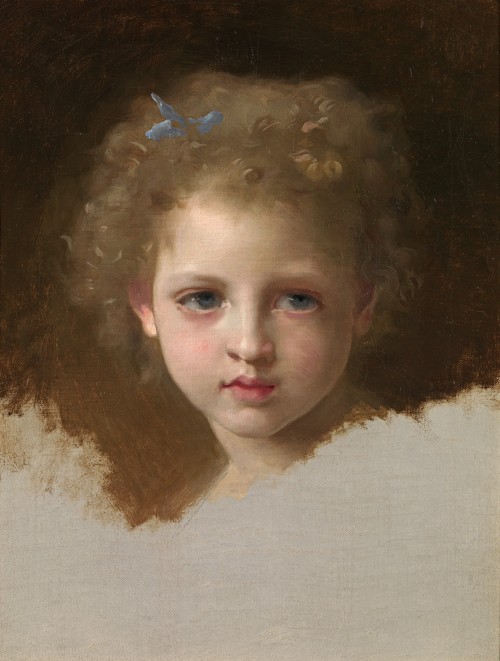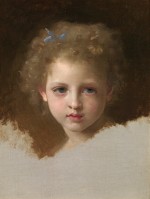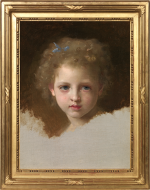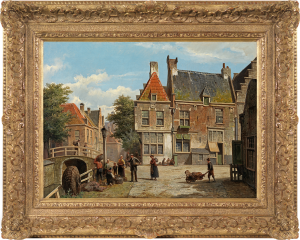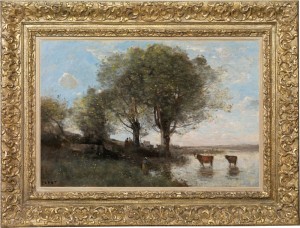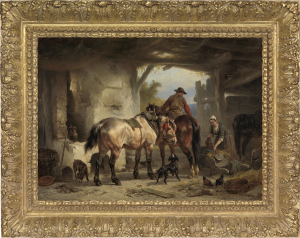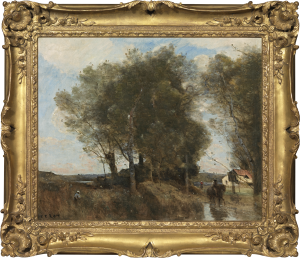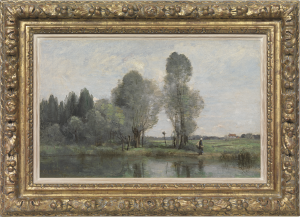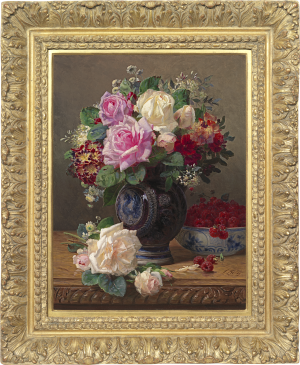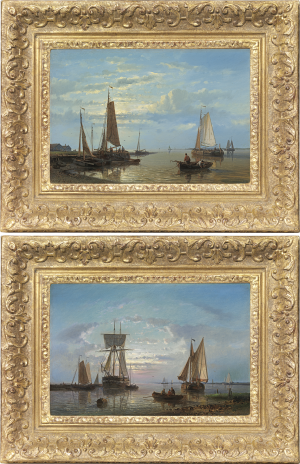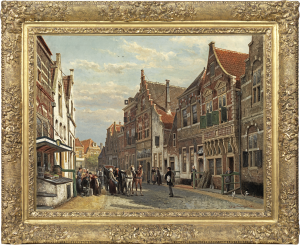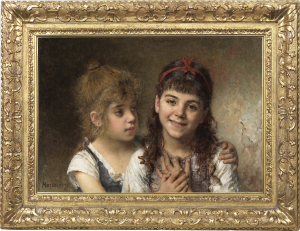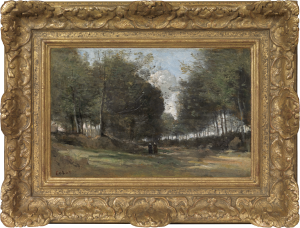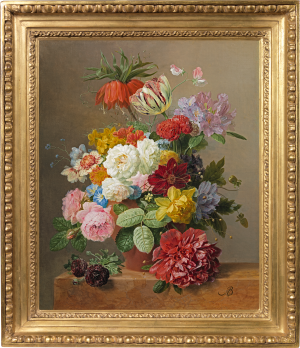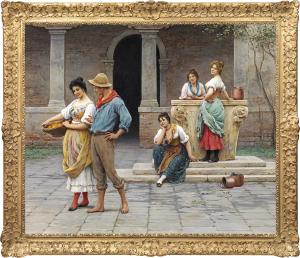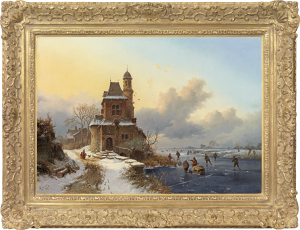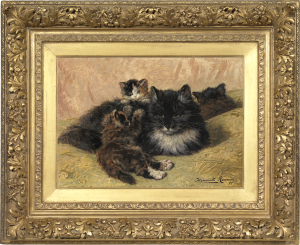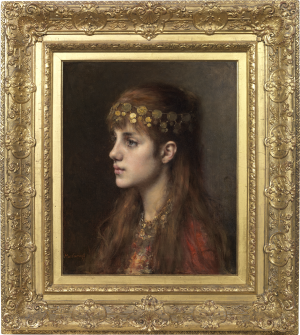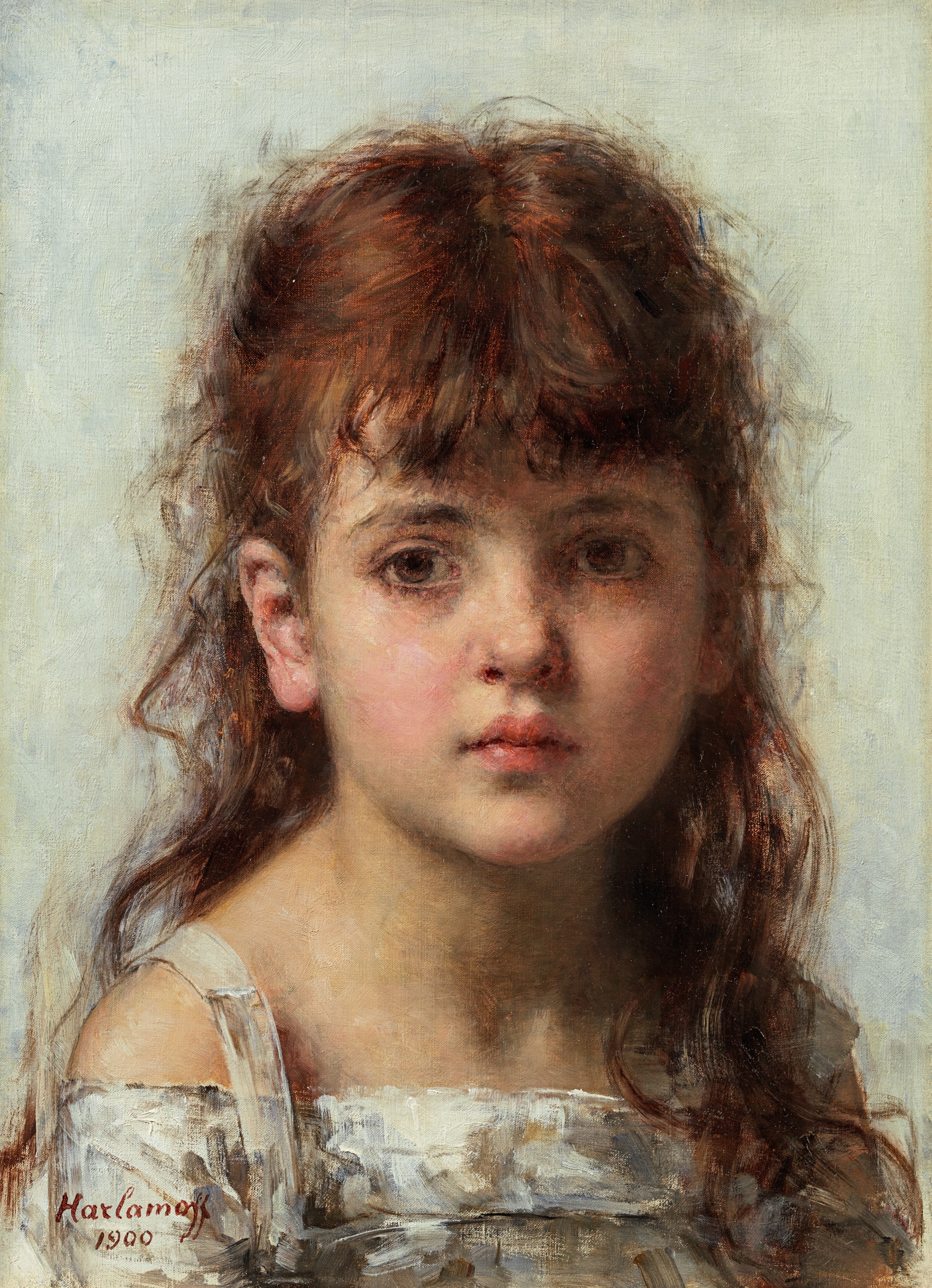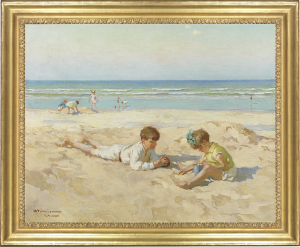William-Adolphe Bouguereau
Portrait de fillette au ruban bleu
Oil on canvas: 16.1 x 13 (in) / 41 x 33 (cm)
This artwork is for sale.
Please contact us on: +44 (0)20 7493 3939.
Email us
WILLIAM ADOLPHE BOUGUEREAU
1825 - La Rochelle - 1905
Ref: BX 202
Portrait de fillette au ruban bleu
Oil on canvas: 16 1/8 x 13 in / 41 x 33 cm
Frame size: 20 x 16 ¾ in / 50.8 x 42.5 cm
Painted circa 1894-1901
Provenance:
The studio of the artist;
by descent to his grandson M William Vincens-Bouguereau, Sainte-Foy-lès-Lyon;
by whom given to a private collector, Lyon, circa 1980;
by descent to his children
Frederick C Ross, author of the Bouguereau catalogue raisonné (2010), has confirmed that this is an autograph work by William-Adolphe Bouguereau
William-Adolphe Bouguereau was an exponent of the classical tradition in French painting which took its inspiration from Jean-Auguste-Dominique Ingres (1780-1867); he was taught by Ingres’s pupil Louis Sage. In 1850 he studied at the French Academy in Rome, where he was surrounded by the plethora of ancient Roman statues scattered in collections throughout the city. Bouguereau’s study of the nude gained greatly from his encounters with these masterpieces.
Portrait de fillette au ruban bleu[1] is an enchanting life study of the child from which Bouguereau composed classical scenes such as L’admiration, 1897 (San Antonio Museum, TX)[2]. The little girl’s regular features, huge blue-grey eyes, curly hair and and cupid’s-bow lips echo Roman sculptures, but this painting has the vivid presence of the model, shy and rather solemn. Bouguereau works swiftly on a grey ground, capturing the pearly quality of the child’s skin and the softness of her curly, light brown hair, touched with gold as the sunshine plays over it.
This child model appears in a number of other paintings between 1894 and 1901, including L’amour pique, 1894 (private collection)[3]; L’amour à l’épine, 1894 (private collection)[4]; L’assaut, 1898 (private collection, France)[5]; Inspiration, 1900 (private collection)[6]; Tendres propos, 1901 (Cornell Museum of Fine Arts, Winter Park, FL)[7] and L’amour s’envole, 1901 (Frye Art Museum, Seattle, WA)[8]. The life study was one of a number which remained in Bouguereau’s studio after his death and which were inherited by his grandson William Vincens-Bouguereau. Around 1980 M. Vincens-Bouguereau and his wife gave several paintings by Bouguereau, including the present work, to a Lyons politician and furniture-maker from whom they had commissioned several items. Portrait de fillette au ruban bleu has descended in the furniture-maker’s family.
William-Adolphe Bouguereau, L’admiration, 1897. San Antonio Museum, TX.
WILLIAM-ADOLPHE BOUGUEREAU
1825 - La Rochelle - 1905
William-Adolphe Bouguereau was a painter of mythological, religious and historical subjects, as well as portraits and the occasional scene of contemporary genre. He was a disciple of the classicism espoused by the nineteenth century Paris Academy. His carefully constructed compositions, emphasising the idealised human figure, are worked through half-tones, to the highest degree of finish.
Bouguereau was the son of an olive oil merchant from La Rochelle in south-western France. He first studied with Louis Sage, a student of Ingres; later he joined the Ecole Dessin et de Peinture in Bordeaux and worked under Jean-Paul Alaux. He then moved to Paris after being accepted, with the support of Picot, to the Ecole des Beaux-Arts in Paris. In 1866 Bouguereau signed an exclusive contract with the powerful Parisian art dealer Goupil. As a result of this he was exposed to large and generous patronage in the USA. In fact almost seventy per cent of his production after 1866 was intended for, and sold to, American collectors.
Bouguereau received several second and third class medals and honourable mentions in the late 1840s. In 1850, Baudry received the first class Rome Prize, but as there was a vacancy at the Villa Medici a special dispensation was made and Bouguereau was also sent to study in Rome. The subject of his prize-winning submission was Zenoby found by the shepherds on the banks of the Arax. As President of the Société des Artistes Français, Bouguereau was a crucial member of the Salon jury, and often opposed to the subject matter and techniques of the Impressionists. When Meissonnier formed the breakaway Société Nationale des Beaux- Arts, the official Salon became known as ‘Le Salon Bougereau’. Bouguereau was perhaps best known for his handling of the female figure in all her forms: idealised nudes, Madonnas, and the first blossoms of womanhood. His painting technique achieved an unsurpassed degree of finish and luminous coloration, the hallmarks of the French Academy of the late nineteenth century.
The work of William-Adolphe Bouguereau is represented in the Musée d’Orsay, Paris as well as museums in Bordeaux, Dijon and La Rochelle, and in the Palace of the Legion of Honour, San Francisco.
[1] We are grateful to Frederick C Ross for his assistance with the cataloguing of this painting.
[2] Damien Bartoli and Frederick C Ross, William Bouguereau: Catalogue Raisonné of his Painted Work, Antique Collector’s Club, New York, 2010, p.319, no.1897/10.
[3] Bartoli and Ross, op. cit., no.1894/07.
[4] Ibid., no.1894/06.
[5] Ibid., no.1898/03.
[6] Ibid., no.1900/06.
[7] Ibid., no.1904/04.
[8] Ibid., no.1901/05.

